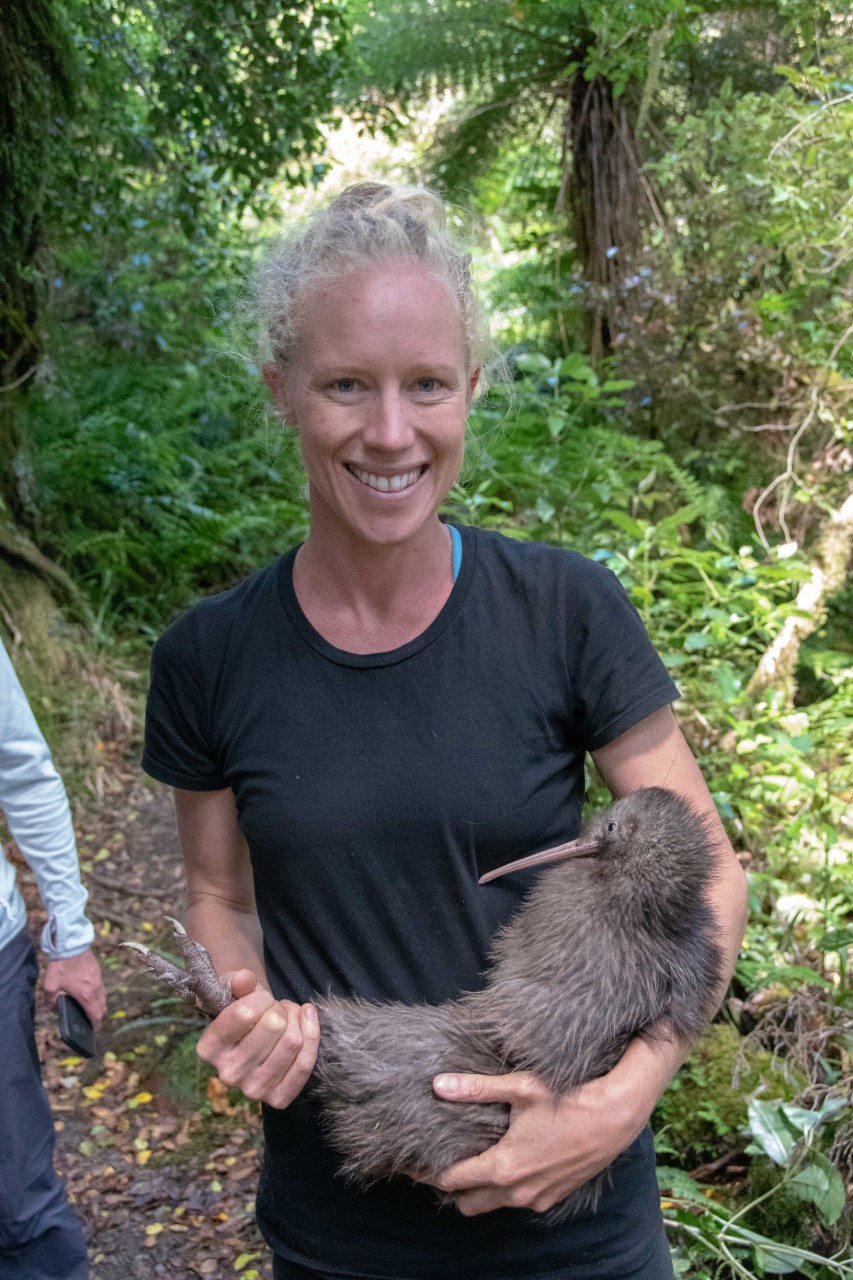Our Taranaki Mounga project coordinator Sian Potier gives us an insight to a long day tracking down a kiwi on Mt Taranaki for his annual health check and transmitter change.
Popokotea (Popo) is a 3 year old male kiwi who is lucky enough to part of a kiwi monitoring program the trust is conducting in Egmont National Park. The program is in place to measure survival and dispersal of kiwi post release. Popo was rehomed at the bottom of the Ngatoro Track in November 2016 with a transmitter attached to his leg and his progress has been tracked since.
At 7:30am I picked up TKT volunteer Louise to head off on our adventure to catch Popo. It was a clear cool morning and there was a fresh dusting of snow on the mountain. Louise has been keeping a close eye on Popo for the last few months going up every week or so to get a signal using telemetry gear and record the transmitter codes, these codes give us a good indication of what the kiwi has been up to and even tell us when he is incubating eggs.
At around 8am we arrived at the North Egmont Visitor Centre. We had quite large packs filled with warm clothes and wet weather gear as we knew we were heading up reasonably high. We headed off up the Puffer towards Tahurangi Lodge. When we could see the lodge, we got out the telemetry gear and got a signal on Popo, he was still further on up and it seemed like he was on the other side of a large gully to us.
We made a plan to go up to the translator tower and around down the ridge opposite. We made our way up stopping every so often to get a signal on Popo to try and determine his position. We reached the fresh snow and kept heading onwards and upwards! Luckily for us there was a bit of a track on the ridge on the other side of the gully for us to follow. We determined where we thought Popo was then headed down into the gully well away from him so we could approach him from below.
We crashed our way through the overhead sub alpine scrub while avoiding the large boulders and drop offs below our feet. Kiki hunting is not for the faint hearted especially on Mt Taranaki! As we got lower into the gully the flora changed and it was much easier to get around.
We had a bit of signal bounce from around the surrounding bluffs so we had to carefully try to determine his position using the aerial. We figured out where he was from the bottom of the gully and moved slowly in his direction being careful not to scare him off.
As we got closer we were able to move down transmitter channels until we could get a signal without the aerial. His burrow entrance was well hidden but we managed to find it and carefully extract him. We changed Popo’s transmitter, weighed him and measured his bill. He weighed 1680 grams and his bill was 94mm. He was in good condition and he still had a bald patch on his head which he has had since he was a chick.
The whole handling process was over in around 20mins and we carefully put him back into his burrow and started the long walk home.
We arrived back at the car at 3pm after another successful day on our beautiful Mounga.








31 Richmond Street
Inglewood, 4330
Postal Address:
PO Box 308
Stratford 4352
Phone: 027 454 0591
E-mail: admin@taranakikiwi.org.nz
Receive regular news and updates. Get involved in upcoming events and support the Taranaki Kiwi Trust.
Stay up to date, follow us on our social media channels;
The Taranaki Kiwi Trust is registered with the Charities Commission, Number CC22851. Therefore, donations and subscriptions made to the Trust over $5 are eligible for a tax rebate.